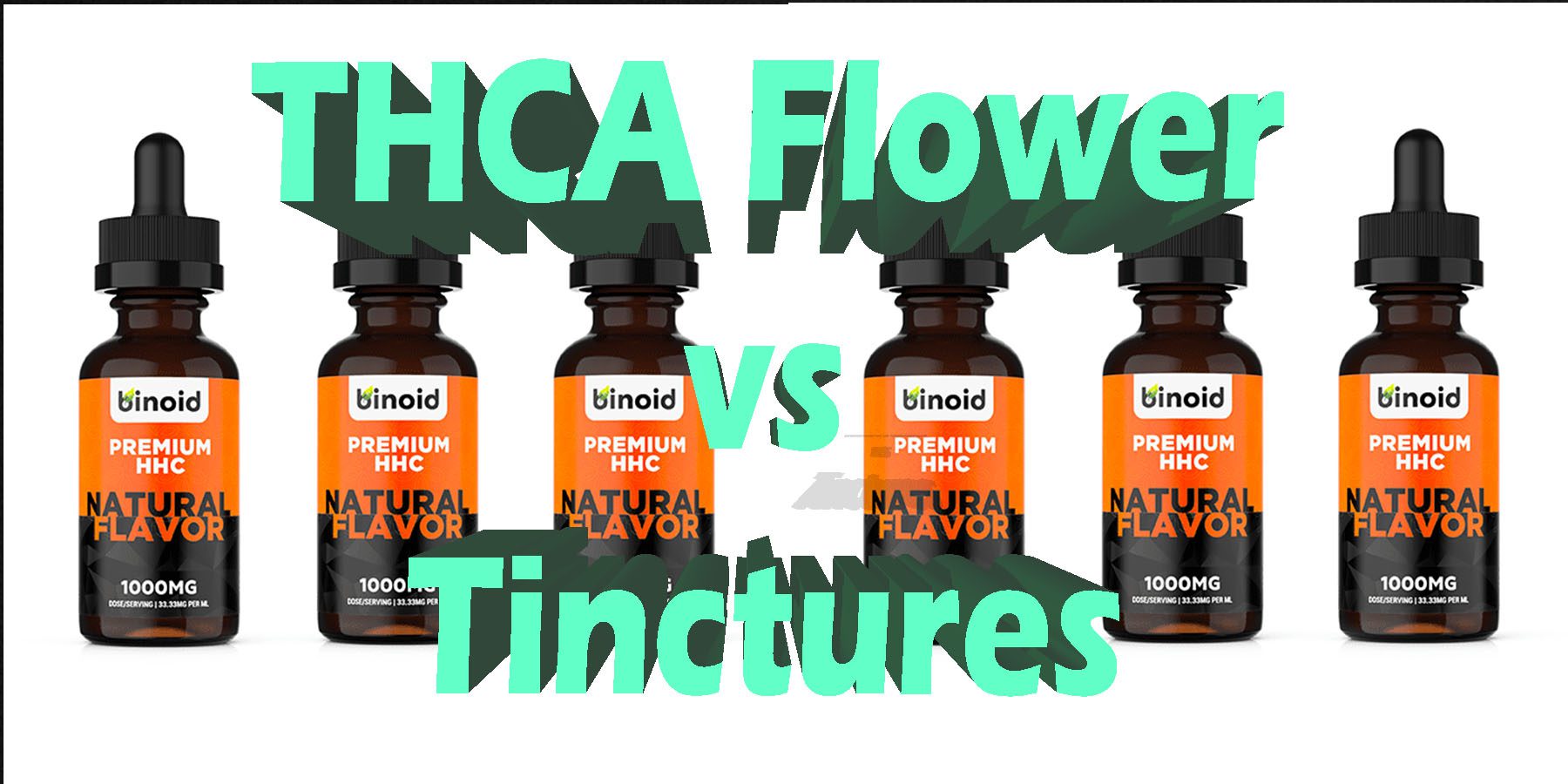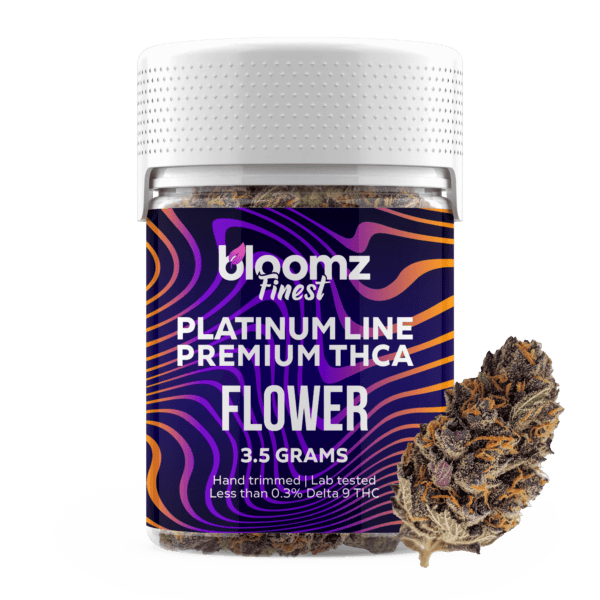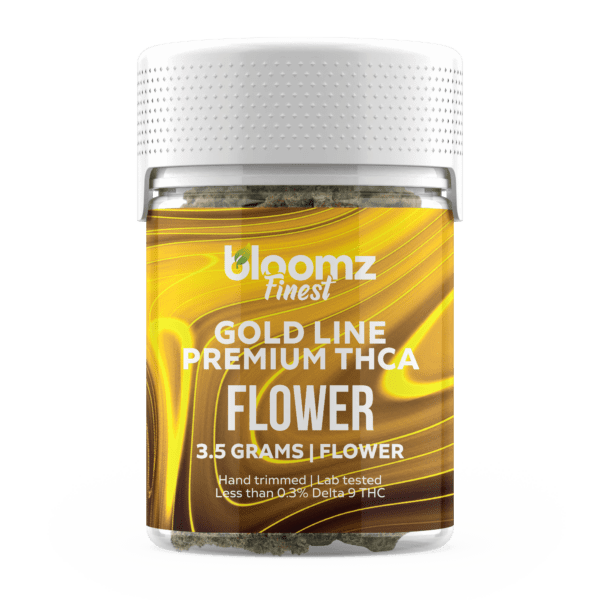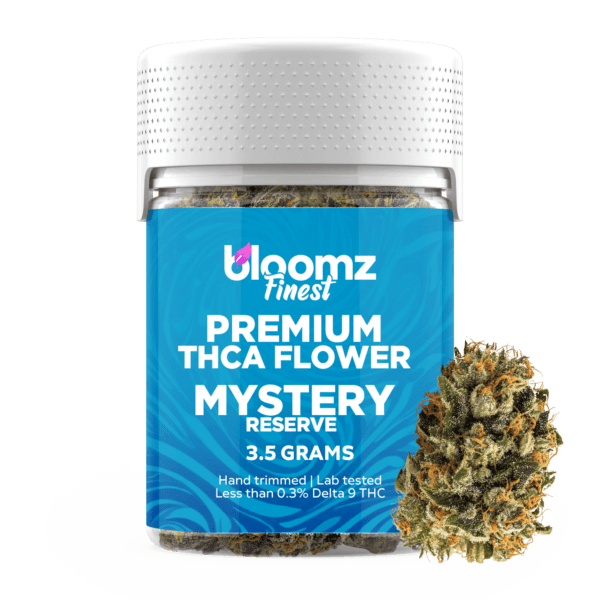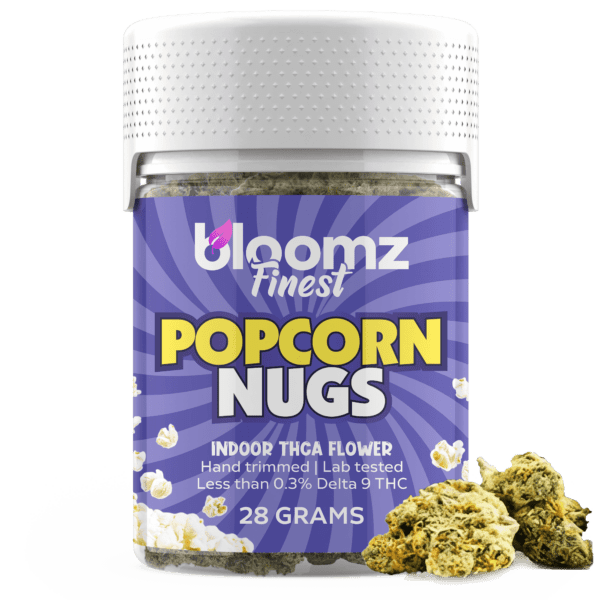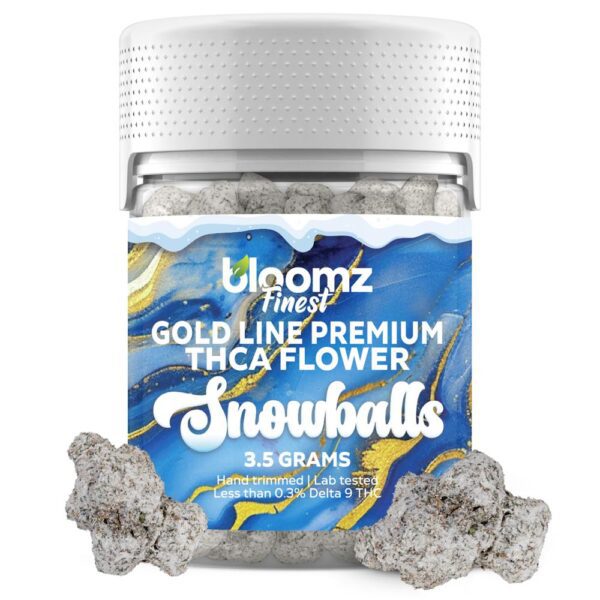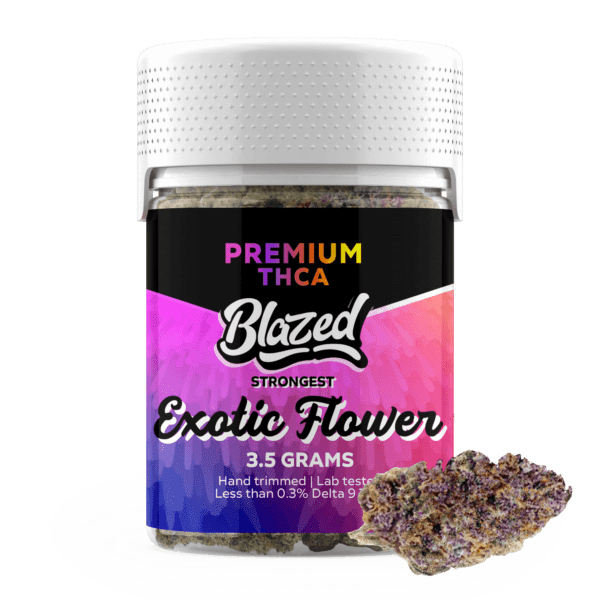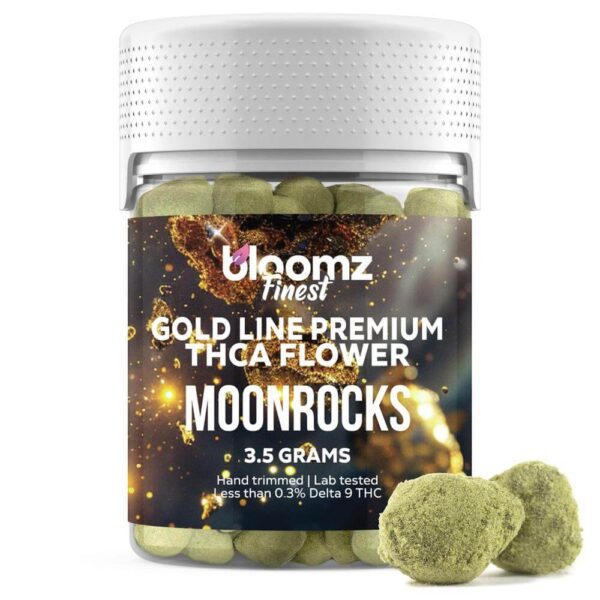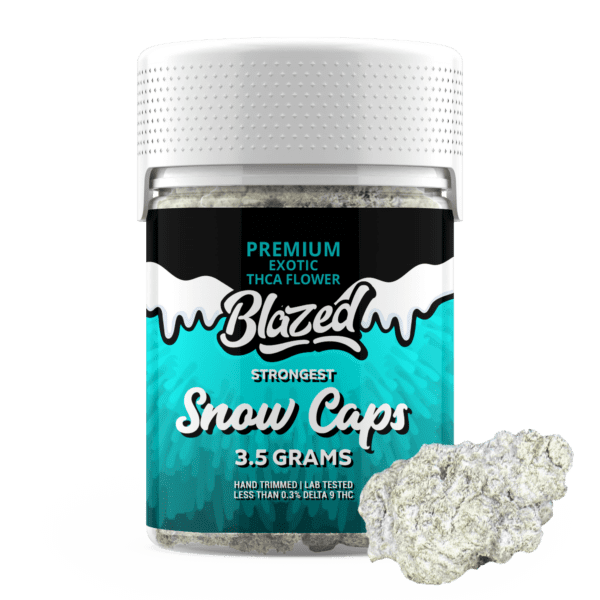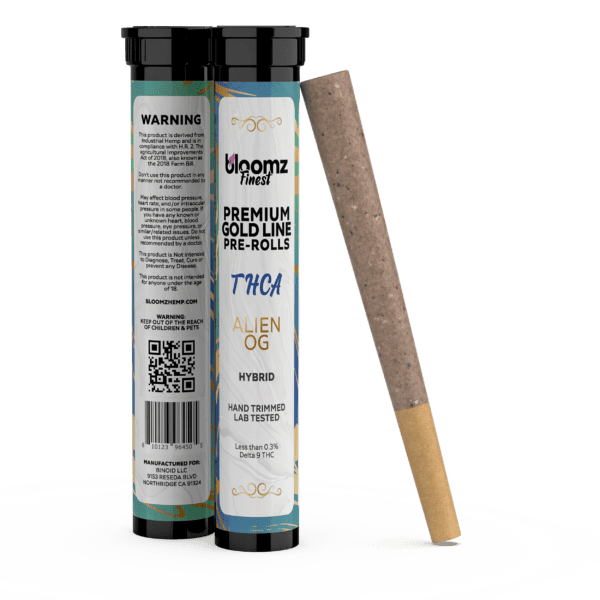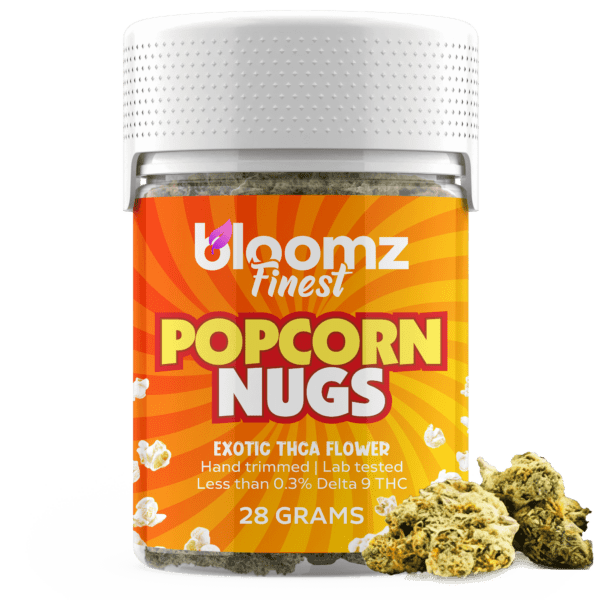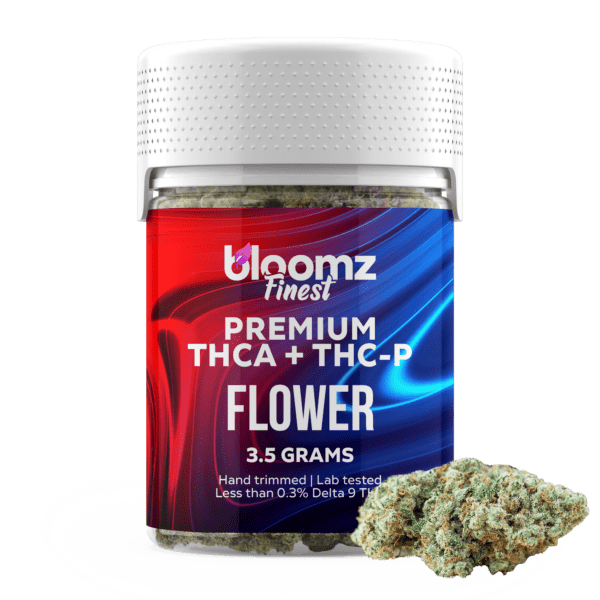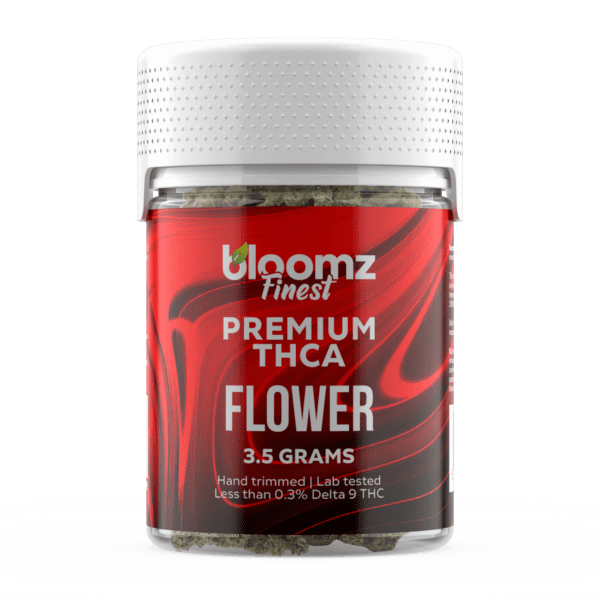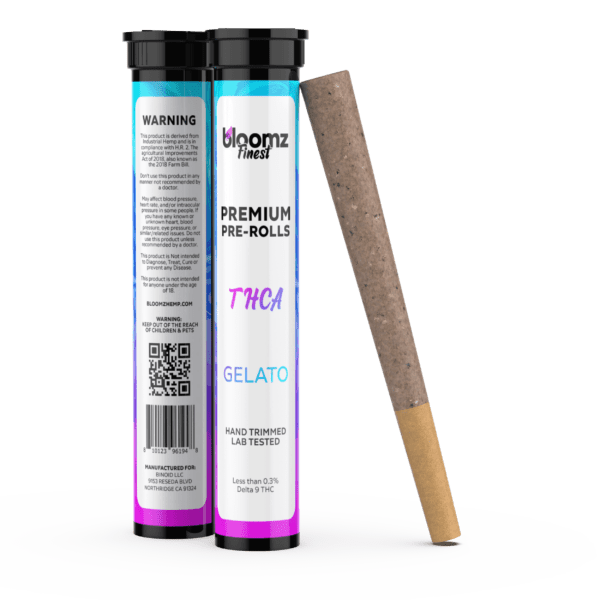In the vast and colorful world of botanical wellness, the paths to personal enjoyment and relaxation are as varied as the individuals who walk them. A fundamental choice often arises between embracing a product in its most natural, whole-plant form versus engaging with its refined, concentrated essence. This very choice is beautifully encapsulated in the comparison between the raw, aromatic splendor of THCA flower and the precise, potent simplicity of a liquid tincture. One invites a tactile, multi-sensory experience: the visual appreciation of a crystalline bud, the fragrance it releases, and the ritual of preparing it.
The other offers a more clinical, controlled, and discreet approach: the careful measurement of a single drop, a potent liquid that holds the distilled spirit of the plant. To explore this matchup is to weigh the appeal of the whole, intricate symphony against the focused power of a masterful solo, a decision that ultimately shapes the entire character of the experience to come.
To Buy THCA Flower Click Here
Recommended products
-
THCA Flower – Platinum Line
$49.99$79.99 -
THCA Flower – Indoor Exotics – Gold Line
$37.99$69.99 -
THCA Flower – Mystery Reserve
$41.99$79.99 -
THCA Smalls
$149.99$256.99
Why It’s Important to Breakdown the Matchup of THCA Flower vs. Tinctures
In an ever-maturing market where consumers are presented with an overwhelming array of choices, a detailed breakdown of two foundational product types like THCA flower and tinctures is essential for fostering true understanding. These two formats represent fundamentally different philosophies of consumption: one rooted in ancient, ritualistic tradition and the other in the long history of herbal apothecaries and modern extraction science. By carefully dissecting their unique characteristics—from their mechanisms of absorption and dosing precision to their flavor profiles and lifestyle integration—we can illuminate the distinct advantages and trade-offs of each.
This comparative analysis serves as a crucial tool, empowering consumers to move beyond surface-level familiarity and make a conscious, informed decision that aligns perfectly with their personal wellness goals, their demand for discretion, and their desired level of control:
A Tale of Two Absorption Pathways: The most significant difference between flower and tinctures lies in how their active compounds enter the body, a distinction that creates dramatically different experiential timelines. THCA flower is consumed through inhalation, a method that delivers its active ingredients directly to the bloodstream via the lungs for a near-instantaneous onset of effects. Tinctures, on the other hand, offer a unique, dual pathway. When held under the tongue (sublingually), the compounds are absorbed through the thin mucous membranes directly into the bloodstream, bypassing the digestive system for a relatively fast onset (often 15-45 minutes). Any amount that is swallowed then undergoes the slower process of liver metabolism, similar to a traditional edible, providing a longer-lasting secondary wave of effects. This hybrid absorption model gives tinctures a unique character that is faster than edibles but longer-lasting than inhalation.
Precision vs. Process: The Dosing Dilemma: The approach to dosing with these two products could not be more different. With THCA flower, dosing is an intuitive, qualitative process. The user can titrate their experience puff-by-puff, taking small inhalations and waiting to gauge the effects in real-time. While this offers excellent in-the-moment control, it is nearly impossible to quantify in precise milligrams. Tinctures are the absolute pinnacle of dosing precision. They come in bottles with graduated droppers, allowing the user to measure out an exact volume (e.g., 0.5 mL) and therefore a precise milligram dose of the active ingredient. This level of quantitative control is unparalleled, making tinctures ideal for users who wish to track their intake meticulously and achieve a highly consistent and repeatable experience every single time.
The Sensory Experience: Terpenes vs. Tinctures: The sensory engagement offered by these two formats is profoundly different. The experience of THCA flower is a rich feast for the senses, driven by its complex profile of aromatic terpenes. The smell of the raw flower and the taste of its vapor or smoke are integral parts of the experience, with different strains offering a vast spectrum of flavors from earthy and piney to fruity and sweet. Tinctures, conversely, are often a more neutral or even unpleasant sensory experience. The taste is typically dominated by the carrier oil (such as MCT, olive, or hemp seed oil) and the concentrated, often bitter taste of the plant extract itself. While many tinctures are formulated with added flavorings to mask this, their primary appeal is functional and not centered on a rich, enjoyable flavor profile.
Lifestyle and Discretion: How a product fits into the user’s daily life and need for privacy is a major consideration. THCA flower, with its associated paraphernalia (grinders, pipes, vaporizers) and its unmistakable, pervasive odor, is a product that demands a private and dedicated space for consumption. It is inherently low in discretion. Tinctures are the complete opposite. A small, unassuming bottle with a dropper can be carried discreetly in a purse or pocket. A dose can be taken quickly, quietly, and without producing any odor whatsoever. This makes tinctures an exceptionally versatile option that can be used almost anywhere without drawing any attention, fitting seamlessly into a wide variety of lifestyles.
The Raw vs. The Refined: Ultimately, this comparison highlights a choice between a whole-plant product and a refined extract. Flower offers the full, unadulterated symphony of compounds as they exist in the cured plant, allowing for the holistic “entourage effect” in its most natural state. A tincture is, by its very nature, an extract. The process involves using a solvent (like alcohol or CO2) to pull the desirable compounds from the plant material, leaving the physical plant matter behind. This results in a potent, concentrated liquid that contains the essence of the plant, but not the plant itself. This is a choice between engaging with the raw material and engaging with its distilled spirit.
Contender #1: THCA Flower
THCA flower has emerged as a true luminary in the modern botanical market, celebrated for its unique position at the intersection of artisanal agriculture, cutting-edge science, and nuanced legal frameworks. It represents the cannabis plant in its most authentic, unadulterated state, captivating the hearts of both seasoned connoisseurs and curious newcomers alike. This crystalline-coated flower is the direct product of a grower’s craft, cultivated with an artist’s touch to preserve its natural integrity and immense potential.
It can be thought of as a latent image on a roll of film; the picture is all there, but it only becomes visible when developed by the transformative chemistry of heat. For many, the profound appeal of THCA flower lies in this very state of readiness—the pure, whole plant, rich with aromatic terpenes and a full spectrum of cannabinoids, offering a direct and unfiltered connection to its botanical origins. To choose THCA flower is to embrace a hands-on, sensory-rich experience, a process that values the journey as much as the final destination.
To fully grasp the concept of THCA flower, one must first become acquainted with its namesake molecule: Tetrahydrocannabinolic acid (THCA) – the non-intoxicating, acidic cannabinoid that serves as the direct biosynthetic precursor to the far more famous Delta 9 THC. In the living biology of the cannabis plant, cannabinoids are primarily synthesized and stored in these acidic forms. In many popular cannabis varieties, THCA is by far the most abundant compound. The critical distinction between the THCA molecule and its Delta 9 THC counterpart is a small, appended molecular structure called a carboxyl group. While seemingly insignificant, this carboxyl group fundamentally alters the molecule’s three-dimensional geometry, making it too large and misshapen to effectively bind with the CB1 receptors in the brain and central nervous system.
This specific molecular binding is the primary mechanism that produces the signature euphoric effects of THC. Therefore, in its raw, native state, THCA is not intoxicating. The remarkable transformation occurs through a process known as decarboxylation. When heat is applied, this extra carboxyl group is released, and the THCA molecule is instantly converted into the psychoactive, receptor-friendly Delta 9 THC, thereby unlocking its well-known effects.
With this scientific context, THCA flower can be clearly defined as cannabis flower that has been expertly bred and meticulously cultivated to produce an exceptionally high concentration of THCA, while ensuring that the naturally occurring levels of Delta 9 THC remain below the 0.3% legal threshold established by federal law. To all the human senses—sight, smell, and touch—this flower is virtually identical to traditional high-THC cannabis. It exhibits the same dense bud structures, the same sticky coating of resinous trichomes, and the same complex and pungent aromas. This is because, botanically, it is the exact same plant. The crucial difference is its specific chemical profile, or chemotype, which is achieved through a combination of masterful genetic selection and a painstaking post-harvest protocol designed to preserve the integrity of the THCA molecule and prevent its premature conversion.
Recommended products
The production of this premium, legally compliant flower is a sophisticated agricultural endeavor, a multi-stage process where every detail is paramount to the final quality:
Curating the Genetic Blueprint: The entire process begins with genetics. Expert breeders pour immense resources into identifying and stabilizing cannabis strains that naturally express a high-THCA and low-Delta 9 THC chemotype. This often involves cross-breeding different cultivars over many generations to lock in the desired traits. The goal is to create a robust plant that not only meets the legal requirements but also produces desirable characteristics such as a rich terpene profile for aroma and flavor, dense bud structure, and a beautiful visual appearance covered in cannabinoid-rich trichomes. This foundational step is the blueprint for a successful and compliant final product.
Precise Cultivation: Once the right genetics are chosen, the plants are grown in highly controlled environments. Indoor or light-assisted greenhouse cultivation is often preferred because it allows growers to manage every variable—light cycles, temperature, humidity, nutrients, and CO2 levels—to absolute perfection. This level of control encourages the plant to devote its energy to producing the maximum amount of cannabinoids and terpenes while carefully managing conditions to prevent any environmental stressors that could cause premature degradation of THCA.
Strategic Harvesting: The timing of the harvest is not arbitrary; it is a calculated decision based on the maturity of the plant’s trichomes. Trichomes are the tiny, crystalline glands on the surface of the flower that produce and store the vast majority of cannabinoids and terpenes. Growers use magnifying tools to inspect these trichomes, harvesting when they have reached peak cloudiness, which indicates the highest concentration of THCA. Harvesting too early or too late can result in a less potent and less flavorful product, making this a pivotal moment in the cultivation process.
Slow and Steady Drying and Curing: After harvesting, the flower undergoes a slow drying and curing process, which is arguably the most critical stage for preserving quality. The branches are hung to dry in a dark, climate-controlled room with specific temperature and humidity levels for about one to two weeks. This slow drying prevents the breakdown of delicate terpenes and cannabinoids. Following this, the trimmed buds are placed in airtight containers for the curing phase, which can last from several weeks to months. The containers are “burped” regularly to release moisture and gases. This patient process not only enhances the flower’s smoothness and flavor but, crucially, prevents the THCA from converting into Delta 9 THC, which can happen over time with exposure to heat, light, and oxygen.
Rigorous Compliance Testing: Before the product can ever reach a consumer, it must pass a final, crucial test. Representative samples from each harvest batch are sent to an accredited third-party laboratory for comprehensive analysis. This lab testing provides a Certificate of Analysis (COA), which is a detailed report that verifies the exact cannabinoid profile of the flower. Most importantly, it confirms that the Delta 9 THC level is at or below the 0.3% federal limit, rendering the product legal hemp. The COA also shows the high percentage of THCA, along with other cannabinoids and often a terpene analysis, providing full transparency and peace of mind for the consumer.
The world of THCA flower is remarkably diverse, offering a wide spectrum of types and categories that cater to every preference and budget. This variety is a testament to the sophistication of modern cultivation and processing techniques, allowing consumers to choose products based on their desired quality, potency, and form factor. From naturally grown buds to artisanally crafted creations, the options are plentiful.
Understanding these different categories helps consumers navigate the market and find the perfect product to match their needs, whether they prioritize aroma, strength, or ease of use. Each type offers a unique experience rooted in its specific method of cultivation and preparation:
Indoor THCA Flower: This is the premium standard in the world of cannabis cultivation. Grown entirely indoors, these plants are nurtured under perfect, highly controlled conditions. Growers have complete command over lighting (often using powerful LED or HPS lamps), temperature, humidity, airflow, and nutrient schedules. This meticulous management eliminates the stressors of the outdoors, such as pests and unpredictable weather, allowing the plant to focus all its energy on producing dense, resinous buds. The result is flower with maximum visual appeal, characterized by a thick coating of crystalline trichomes, vibrant colors, and a potent, complex aroma derived from a rich terpene profile. Indoor flower is celebrated for its consistency and top-tier quality, making it a favorite among discerning connoisseurs.
Outdoor THCA Flower: Cultivated under the natural sun and in the open air, outdoor THCA flower offers a different kind of quality. While it may not always have the pristine, manicured look of indoor buds, it benefits from the full spectrum of natural sunlight, which some argue leads to a more robust and complex cannabinoid and terpene profile—a concept known as “terroir.” Outdoor grows are more cost-effective and environmentally sustainable, resulting in a more affordable product for consumers. The buds are often larger, though they can be less dense, and their appearance and aroma are shaped by the unique conditions of their environment, offering a more rustic and traditional cannabis experience.
THCA Smalls: As the name suggests, “smalls” are smaller-sized buds from the cannabis plant. These are not lower in quality or potency; they simply didn’t grow as large as the main colas (the top-most, largest buds), often because they were located lower on the plant and received less direct light. Venders collect these small but mighty nugs during the trimming process and sell them at a lower price point than the larger, top-shelf flower. This makes THCA smalls an excellent value proposition for consumers who want the same high-quality experience of premium flower without the premium price tag, particularly for those who plan to grind it up for use in joints or vaporizers.
THCA Nugs: This term typically refers to the standard, full-sized buds, or “nugs,” that are harvested, trimmed, and sold as the primary product. These are the A-grade flowers that showcase the plant’s genetics in all their glory. They are well-formed, dense, properly cured, and represent the quintessential cannabis flower experience. When you purchase THCA flower, you are most often buying these premium nugs, which are graded on their size, structure, trichome coverage, and overall bag appeal.
THCA Snowballs/Snow Caps: This is a high-potency specialty product. It starts with a premium nug of THCA flower that is then coated or rolled in pure, powdered THCA isolate. This white, crystalline powder gives the bud a “snow-covered” appearance, hence the name “snowball” or “snow cap.” The addition of the isolate dramatically increases the overall THCA percentage of the product, often pushing it well above 40% or even 50%. This creates an incredibly potent product designed for experienced users seeking a powerful and profound effect.
THCA Moonrocks: Taking the concept of infused flower a step further, THCA moonrocks are the pinnacle of potency in the flower world. The creation process involves taking a high-quality THCA nug, dipping it or coating it in a sticky cannabis concentrate or oil (such as Delta 8 or CBD distillate), and then rolling the entire sticky creation in a generous layer of kief (the collected trichomes) or pure THCA isolate. The result is a dense, heavy, and extraordinarily potent product that is best consumed by breaking it apart and adding small pieces to a bowl or joint, as it can be too sticky to grind properly.
THCA Pre-Rolls, Blunts & Joints: For ultimate convenience, many brands offer pre-rolled products. THCA flower is expertly ground and packed into rolling papers (joints) or hemp wraps (blunts), making them ready to enjoy right out of the package. This eliminates the need for users to own a grinder, papers, or have the skill to roll their own. Pre-rolls are a fantastic option for social settings, for trying a new strain without committing to a larger quantity, or for anyone who values a quick, simple, and consistent consumption method.
Exotic THCA Flower: “Exotic” is a term used to describe cannabis strains that are rare, unique, or possess exceptionally desirable characteristics. These are often newer, hype-worthy genetics that feature unusual colorations (like deep purples and bright pinks), incredibly complex and novel flavor profiles (like candy, baked goods, or tropical fruits), and exceptionally high potency. Exotic strains are sought after by cannabis aficionados who are always on the hunt for the latest and greatest in cannabis breeding and want an experience that goes beyond the standard.
AA Exotic THCA Flower: Within the world of cannabis grading, “AA” or “dubs” typically represents a budget-friendly or mid-grade option. While it’s still a quality product that is perfectly enjoyable, it may be lacking in one or more of the top-tier attributes. The buds might be slightly less dense, the trim job not as meticulous, or the aroma and flavor less pronounced compared to higher grades. AA flower is a solid choice for casual consumers or those on a tighter budget who still want a reliable and effective product.
AAA Exotic THCA Flower: Often referred to as “trips,” AAA is the industry standard for high-quality cannabis. This grade of flower ticks most of the boxes for an excellent experience. The buds are well-structured and dense, have a good coating of trichomes, a pleasant and noticeable aroma, and deliver a smooth, flavorful experience. Most of the reputable flower on the market falls into the AAA category, representing a fantastic balance of quality and value that satisfies the vast majority of consumers.
AAAA Exotic THCA Flower: The highest echelon of cannabis quality is AAAA, also known as “quads” or “top-shelf.” This grade is reserved for the absolute best of the best. AAAA flower is virtually flawless in every aspect. It boasts breathtaking bag appeal with an impossibly thick layer of frosty trichomes, a pungent and complex aroma that fills the room, and a rich, delicious flavor that perfectly matches its scent. The bud structure is dense and perfectly cured, and the effects are potent and nuanced. AAAA is a luxury product for those who demand an unparalleled, premium cannabis experience from start to finish.
Just as important as the type or grade of the THCA flower is the specific strain, which dictates the nuanced effects, aromas, and flavors of the experience. The cannabis world is broadly categorized into three primary strain types: Indica, Sativa, and Hybrid. These classifications have long been used to help consumers predict the kind of journey a particular flower will take them on. While modern science suggests that the true effects are more closely tied to a strain’s unique profile of cannabinoids and terpenes, these categories remain an incredibly useful and widely understood shorthand for describing the general character of a flower, guiding users toward the experience that best suits their mood and occasion.
Each category represents a different branch of the cannabis family tree, with distinct physical characteristics and a legacy of producing certain types of effects:
Indica: Traditionally originating from the hash-producing regions of the world like Afghanistan, Pakistan, and India, Indica plants are known for their distinct physical traits. They are typically short, bushy, and dense, with wide, broad leaves of a deep green color. In terms of their effects, Indica strains have a strong reputation for producing profoundly relaxing and sedating experiences. They are often described as providing a “body high,” a feeling of deep physical ease and tranquility that can make you feel heavy, calm, and “chilled out.” These qualities make Indica THCA flower strains a popular choice for evening use, for unwinding after a long day, or for quiet activities like watching a movie or listening to music. Common terpenes found in Indica strains, such as myrcene, caryophyllene, and linalool, are thought to contribute to their classic soothing and calming aromatic profiles.
Sativa: Sativa strains hail from the equatorial regions of the world, including Southeast Asia, Africa, and Central America. In contrast to Indicas, Sativa plants grow tall and lanky, with thin, narrow leaves of a lighter green hue. Their effects are often considered the polar opposite of Indicas. Sativa strains are renowned for their energizing, uplifting, and cerebral effects, often described as a “head high.” Users frequently report feelings of euphoria, creativity, and focus, making Sativas a go-to choice for daytime activities, social gatherings, creative projects, or any situation where an energetic and positive mindset is desired. The terpene profiles of Sativa strains are often dominated by compounds like limonene, pinene, and terpinolene, which contribute to their characteristic bright, citrusy, and piney aromas.
Hybrid: As the name implies, Hybrid strains are created by cross-breeding Indica and Sativa plants. This practice has become the backbone of modern cannabis cultivation, allowing breeders to create new strains that combine the most desirable traits from both sides of the genetic spectrum. Hybrids can be Indica-dominant, Sativa-dominant, or a balanced 50/50 mix, resulting in an incredibly vast and nuanced range of potential effects. For example, an Indica-dominant hybrid might offer deep relaxation without being overly sedating, while a Sativa-dominant hybrid could provide an upliftingcerebral buzz tempered with a pleasant sense of bodily ease. Hybrids offer the best of both worlds, and their goal is to fine-tune the user experience, creating strains that are perfectly tailored for specific desires and occasions.
The legality of THCA flower in the United States is a fascinating and complex subject, rooted entirely in the language of the 2018 Agriculture Improvement Act, more commonly known as the 2018 Farm Bill. This landmark piece of federal legislation officially descheduled hemp from the Controlled Substances Act, creating a legal distinction between hemp and marijuana for the first time in modern history. The bill defined legal hemp as any part of the Cannabis sativa L. plant, including its derivatives, extracts, and cannabinoids, with a Delta 9 THC concentration of not more than 0.3% on a dry weight basis.
This specific wording is the key that unlocked the door for THCA flower. Because THCA is not Delta 9 THC, flower that is rich in THCA but contains less than 0.3% Delta 9 THC meets the federal definition of legal hemp. This allows it to be legally cultivated, sold, and possessed at the federal level. However, the situation becomes more complicated at the state level. While it is federally compliant, some states have enacted their own laws that take a different approach.
These states have adopted “total THC” testing requirements, which mandate that the potential amount of Delta 9 THC (calculated by adding the existing Delta 9 THC to the amount that could be created from the THCA) must be below 0.3%. This effectively bans THCA flower in those jurisdictions. As a result, the legality of THCA flower exists in a gray area, where it is permissible in many states but explicitly illegal in others, creating a patchwork of regulations across the country that consumers must carefully navigate.
The versatility of THCA flower is one of its most appealing attributes, offering users a variety of ways to enjoy its potential. The chosen method of consumption directly impacts the experience, from the onset and duration of the effects to the flavor and overall character of the session. Each method utilizes the principle of decarboxylation to convert the THCA into Delta 9 THC, but they do so in distinct ways. Whether you prefer the classic ritual of smoking, the flavor-forward experience of vaping, or the long-lasting journey of edibles, THCA flower can be adapted to suit your preferences.
This flexibility allows users to tailor their consumption to their lifestyle, desired level of discretion, and the specific kind of experience they are hoping to achieve:
Vaping (using a portable or desktop vaporizer): Vaping has become an immensely popular consumption method for its efficiency and flavor preservation. A dry herb vaporizer works by heating the THCA flower to a precise temperature, hot enough to activate and vaporize the cannabinoids and terpenes but below the point of combustion. This process, known as convection or conduction heating, effectively decarboxylates the THCA into Delta 9 THC without creating smoke. The resulting vapor is smoother and less harsh on the lungs than smoke and allows the user to taste the full, nuanced flavor profile of the strain’s terpenes. Vaping is also more discreet, as the vapor produced has a much lighter, less lingering aroma than smoke.
Smoking: This is the most traditional and straightforward method of consuming cannabis. It involves combusting the flower in a pipe, bong, joint, or blunt. The intense heat from the flame causes instantaneous decarboxylation, converting the THCA into Delta 9 THC, which is then inhaled through the smoke. Smoking provides immediate effects and is a deeply ingrained ritual for many longtime cannabis enthusiasts. While it is highly effective, the combustion process does destroy some of the delicate terpenes, which can alter the flavor, and the smoke itself contains tar and other byproducts that can be harsh on the respiratory system.
Cooking/Baking: For those who prefer not to inhale their botanicals, THCA flower can be used to create potent and long-lasting edibles. However, you cannot simply add raw flower to a recipe. The flower must first be decarboxylated. This is typically done by grinding the flower and baking it on a cookie sheet in an oven at a low temperature (around 220-240°F) for 30-40 minutes. This controlled heating converts the THCA into active Delta 9 THC. After decarboxylation, the activated flower is infused into a fat, such as butter or coconut oil, which can then be used in any recipe to make homemade edibles. When consumed, the effects are much stronger and last significantly longer than when inhaled, but they also take much longer to kick in, typically 45 minutes to 2 hours.
Once heated, THCA flower delivers effects that are indistinguishable from those of traditional marijuana, because chemically, the active compound becomes the exact same: Delta 9 THC. The experience it produces is multifaceted and can vary dramatically depending on several key factors, including the specific strain’s cannabinoid and terpene profile, the dosage consumed, the user’s individual tolerance and body chemistry, and the environment in which it is used. Generally, users can expect a significant shift in consciousness and perception. This often includes a powerful sense of euphoria, a feeling of lightheartedness and bliss that can lead to laughter and an elevated mood.
Many also report heightened sensory perception, where colors may seem more vibrant, sounds more profound, and food more delicious. Time perception can become distorted, with minutes feeling like hours, and short-term memory may be temporarily impaired. Depending on the strain, the effects can be deeply relaxing, leading to a “couch-lock” state of serene immobility, or they can be cerebrally stimulating, sparking creativity, introspection, and energetic sociability. The journey is uniquely personal, but it is consistently characterized by a potent departure from one’s ordinary state of mind.
Pros & Cons
Like any product, THCA flower comes with its own distinct set of advantages and disadvantages. These characteristics are essential to weigh when determining if it is the right choice for your personal needs and lifestyle. The pros often center on its natural form and the control it offers the user, while the cons tend to relate to its practical application and discretion.
Pros:
An Unadulterated, Single-Ingredient Product: A primary advantage of THCA flower is its purity and simplicity. It is, at its core, a single-ingredient agricultural product, free from the sugars, binding agents, preservatives, and artificial flavors found in formulated edibles. This appeals deeply to individuals who follow a clean-living philosophy and prefer to consume products in their most natural and unprocessed state, offering a direct, unadulterated connection to the botanical source.
Experiencing the Full-Spectrum “Entourage Effect”: Unlike products made with isolated cannabinoids, THCA flower delivers a complete, naturally occurring symphony of compounds. This includes a wide range of minor cannabinoids (like CBGA, CBCA), flavonoids, and a rich profile of aromatic terpenes. This allows the user to experience the “entourage effect,” a widely accepted theory that all these compounds work in synergy to modulate and enhance the overall experience, creating a more holistic, nuanced, and well-rounded effect than any single compound could achieve alone.
Near-Instantaneous Onset of Effects: When THCA flower is consumed via inhalation (smoking or vaping), the onset of effects is incredibly rapid, typically being felt within just a few minutes. This immediacy provides instant feedback, which is highly beneficial for both new and experienced users. It allows for precise dose titration, as one can take a small puff, wait a few minutes to gauge the effects, and then decide whether to consume more, making it much easier to find one’s perfect dose and avoid overconsumption.
Unparalleled Control Over the Session: Flower offers a granular level of control over the consumption experience that is unmatched by edibles. The user has complete authority over the amount used, from a tiny “one-hitter” to a fully packed bowl. The ability to manage the experience puff-by-puff provides an in-the-moment responsiveness that allows users to dial in a very specific and desired level of effect with remarkable precision.
A Rich and Engaging Sensory Journey: The use of high-quality THCA flower is a multi-sensory experience. It begins with the visual beauty of a well-cured, trichome-covered bud and the tactile pleasure of breaking it apart. Most importantly, the diverse world of terpenes creates a vast spectrum of complex aromas and flavors, from pungent diesel and zesty citrus to sweet berry and earthy pine. For many enthusiasts, this aromatic and gustatory exploration is a central and highly cherished part of the overall ritual.
Exceptional Versatility of Use: The same batch of THCA flower can be used in a multitude of ways to suit the user’s mood or circumstance. It can be vaporized for a smooth, clean, and flavor-forward session, smoked in a pipe or joint for a more traditional and potent ritual, or it can be decarboxylated and infused into fats like butter or oil to create a batch of long-lasting homemade edibles, offering a completely smoke-free option.
Broad Accessibility Due to Federal Law: Because of its specific chemical makeup—high in THCA but containing a Delta 9 THC level below the 0.3% federal threshold—THCA flower is legally classified as hemp under the 2018 Farm Bill. This unique legal status makes high-quality, potent cannabis flower accessible to a much broader population of adults in many states where traditional, high-Delta 9 THC cannabis remains prohibited.
The Ability to Curate Effects with Strain Selection: The vast library of available cannabis strains is a major benefit for users of flower. One can intentionally select a specific strain to align with a desired activity or mood. Whether seeking the energizing and uplifting feelings of a Sativa for a creative project, the deep, body-melting relaxation of an Indica for a quiet evening, or the balanced, nuanced effects of a Hybrid, there is a strain to perfectly match the occasion.
The Meditative Pleasure of the Ritual: For a significant number of users, the process is as rewarding as the outcome itself. The deliberate, hands-on ritual of selecting a nug, the sound and feel of grinding the flower, and the careful act of packing a bowl or rolling a joint can be a form of mindfulness. This intentional process helps create a clear transition from the hustle of the day to a state of relaxation and presence.
Aesthetic Beauty and “Bag Appeal”: Beyond its effects, truly well-grown cannabis flower is a thing of beauty. “Bag appeal” is a term used to describe the immediate visual attractiveness of a sample of flower, encompassing its vibrant colors, dense structure, expert trim job, and frosty trichome coverage. This aesthetic quality, combined with the powerful and pleasant fragrance that greets you upon opening the container, creates a strong sense of appreciation for the skill and craft of the cultivator.
Cons:
Requires Ancillary Gear and Preparation: Consuming THCA flower is not a single-step action. It requires a collection of paraphernalia, which at a minimum usually includes a grinder and a consumption device such as a pipe, bong, or vaporizer, along with a lighter or power source. This necessity for additional equipment and the time needed for preparation can be a barrier to entry for some and a hassle for those seeking simplicity.
Produces a Pervasive and Distinctive Odor: The same terpenes that give flower its delightful aroma also produce a very strong, pungent, and unmistakable odor that lingers in the air and can cling to clothes and furniture. This profound lack of discretion is a significant drawback for anyone living in shared spaces like apartments, with roommates or family, or in any situation where privacy and subtlety are paramount concerns.
Inhalation May Pose Respiratory Concerns: The most common and effective ways to use flower involve inhaling its vapor or smoke directly into the lungs. While vaping is generally considered a less harmful alternative, the act of smoking involves combusting plant material, which creates tar and other byproducts. For individuals with respiratory sensitivities or those who simply wish to avoid inhalation for long-term health reasons, this is a major disadvantage.
Inherent Difficulty in Precise Milligram Dosing: While inhaling THCA flower allows for excellent real-time control, it is nearly impossible to measure a precise, quantifiable dose in milligrams. The potency can fluctuate slightly from one part of a bud to another, and there is no practical way to determine exactly how many milligrams of cannabinoids are consumed in a single inhalation. This lack of quantitative precision can be a significant con for users who require or prefer consistent, repeatable, and measurable dosing for their wellness regimen.

Contender #2: Tinctures
Stepping into the spotlight from a long and storied history in both traditional herbalism and modern pharmacology, the tincture represents the pinnacle of precision, discretion, and versatility in the world of botanical extracts. This humble yet powerful format consists of a concentrated liquid extract, typically held in a small glass bottle with a graduated dropper, that allows for an unparalleled level of control over dosing. Tinctures bridge the gap between the rapid effects of inhalation and the long-lasting nature of traditional edibles, offering a unique, hybrid experience that has made them a cornerstone of the wellness community. They are the embodiment of the apothecary’s craft, a potent and refined essence of the plant that is designed for ease of use, consistency, and rapid absorption. For those who value meticulous control, a smoke-free experience, and ultimate discretion, the tincture stands as a formidable and highly sophisticated choice.
A tincture is a concentrated liquid extract of a plant or botanical material. The process of creating one involves soaking the plant matter in a solvent, such as high-proof alcohol or a fat like MCT (medium-chain triglyceride) oil, for a period of time. The solvent pulls out the active compounds from the plant, creating a potent, infused liquid. This liquid is then strained and bottled. The final product is a highly concentrated solution that can be administered in very small, precise amounts, usually drop by drop. Tinctures can be taken in two primary ways. The most common and effective method is sublingual administration, where the user places the desired number of drops under their tongue and holds it there for 60-90 seconds before swallowing.
This allows the active compounds to be absorbed directly into the bloodstream through the dense network of capillaries in the mucous membranes, bypassing the digestive system for a faster onset. The second method is simple ingestion, where the user swallows the tincture directly or adds it to a food or beverage. When taken this way, the tincture behaves like a traditional edible, undergoing first-pass metabolism in the liver for a slower onset but longer duration of effects.
The versatility of the tincture format allows for the creation of highly specialized formulas designed to support specific wellness goals. Manufacturers often create synergistic blends that combine multiple active ingredients to produce a more targeted and effective product. This has led to a market filled with purpose-driven tinctures catering to a wide range of needs:
Sleep: Tinctures formulated to support a restful night are incredibly popular. These blends often start with a base of a relaxing cannabinoid like CBN or CBD. They are frequently enhanced with melatonin, the body’s natural sleep-regulating hormone, to help signal to the body that it is time to rest. To round out the formula, they may also include extracts of traditional herbal botanicals like chamomile, valerian root, and lavender, all of which have a long history of use for promoting calm and tranquility.
Energy: At the opposite end of the spectrum, energy-focused tinctures are designed to provide a clean, sustained boost to start the day or overcome a midday slump. These formulas might contain stimulating cannabinoids like THCV, combined with natural caffeine sources like green tea extract or coffee bean extract. To support mental clarity alongside physical energy, they often include B-vitamins (especially B12), and adaptogenic herbs like ginseng or rhodiola, which are used to support the body’s resilience.
Relaxation: For general, non-sedating relaxation, these tinctures are designed to ease everyday tensions and promote a sense of calm well-being. They typically feature a high concentration of CBD as their base. This is often complemented by the addition of the amino acid L-Theanine, known for promoting a state of “calm alertness,” and extracts from soothing botanicals like lemon balm and passionflower to create a gentle, balancing effect suitable for daytime use.
Wellness: This broad category includes tinctures designed for daily foundational support. They often feature a blend of multiple cannabinoids, such as CBD, CBG, and CBC, to provide a full-spectrum or broad-spectrum effect. These may be combined with powerful antioxidants from superfoods like turmeric (containing curcumin) or elderberry, creating a comprehensive daily supplement to support the body’s overall balance and vitality.
Beauty: A newer but rapidly growing category, beauty-focused tinctures are designed to support skin, hair, and nail health from the inside out. These “ingestible beauty” products typically combine the balancing properties of CBD or other cannabinoids with popular nutricosmetics. This can include collagen peptides to support skin elasticity, biotin (Vitamin B7) for hair and nail strength, and hyaluronic acid for skin hydration, creating a comprehensive formula for a radiant appearance.
Beyond complex botanical blends, the tincture format is also an extremely common and effective delivery system for essential vitamins and minerals. Liquid vitamin tinctures have become a popular alternative to pills and capsules for several reasons. For individuals who have difficulty swallowing pills (a condition known as dysphagia), a liquid format is a far more comfortable and accessible option. Furthermore, some proponents argue that liquid vitamins may have a higher bioavailability and absorption rate than solid pills, as the body does not need to break down a capsule or binders, and the nutrients are already in a dissolved state.
Common vitamin tinctures include Vitamin D3, often suspended in an oil base to aid absorption of this fat-soluble vitamin; Vitamin B12, which is crucial for energy metabolism and is a popular supplement, especially for those on plant-based diets; and comprehensive liquid multivitamin formulas that provide a broad spectrum of essential nutrients in a single, easy-to-take dose. Mineral tinctures, such as those for iron or zinc, are also widely available.
The most vibrant, innovative, and rapidly evolving segment of the modern tincture market is once again, unquestionably those infused with a vast array of hemp-derived cannabinoids. The unparalleled precision dosing, smoke-free nature, and versatility of the tincture format make it the perfect medium for consumers to safely and effectively explore the nuanced world of these fascinating compounds. The market for cannabinoid-infused tinctures is often stratified into tiers based on the potency and psychoactive nature of the cannabinoids used, empowering consumers to select a product that perfectly aligns with their individual tolerance, experience level, and desired outcome:
Non-Intoxicating: This is the foundational category for wellness-focused users. These tinctures contain cannabinoids that do not produce a euphoric “high.” CBD is the most well-known, used for general balance and well-being. CBN is highly sought after for its relaxing and sedative properties, making it a star in nighttime formulas. CBG is another popular option, often explored for its soothing effects. This category also includes tinctures made with the raw, unheated acidic forms of cannabinoids like CBDA and CBGA, which are believed to have their own unique wellness properties separate from their decarboxylated counterparts.
Mild Potency: For users seeking a gentle, functional, and often non-overwhelming psychoactive experience, this tier is ideal. Tinctures featuring Delta 10 THC are known for a mild, sativa-like cerebral buzz that is often described as uplifting and creativity-enhancing. THCV is another unique cannabinoid in this category, sometimes called “diet weed,” as it can produce a short-lived, clear-headed, and stimulating effect that some users find suppresses appetite, a stark contrast to the typical effects of THC.
Moderate Potency: This tier includes the most common and well-known intoxicating cannabinoids. Delta 8 THC tinctures provide a robust euphoric effect that is often described as being clearer-headed and less intense than traditional THC. Delta 9 THC tinctures, made with hemp-derived THC in compliance with the Farm Bill, offer the classic, potent, and well-rounded experience that cannabis is famous for. Tinctures can also contain THCA, which will be converted to Delta 9 THC when metabolized by the liver, behaving similarly to a Delta 9 tincture when ingested.
Strong Potency: This category is reserved for experienced users with a high tolerance, as these cannabinoids are significantly more potent than Delta 9 THC. THC-P is a standout, believed to bind to the CB1 receptor over 30 times more effectively than Delta 9 THC, resulting in an exceptionally powerful and long-lasting experience. Other novel, high-potency cannabinoids like THC-B, THC-H, and the hydrogenated cannabinoid HHC (which has a potency similar to Delta 9 THC but is included here for its novelty and strength) also fall into this category, offering a new frontier of potent effects for the seasoned consumer.
Recommended products
Amanita mushroom-infused tinctures offer a potent and precisely dosable way to experience the unique psychoactive properties of this fungus. It is essential to reiterate that Amanita mushrooms do not contain psilocybin; their effects are derived from the compound muscimol. In a tincture format, a concentrated extract of muscimol is suspended in a liquid base, allowing for microdosing or macrodosing with drop-by-drop accuracy. This is particularly important with Amanita, as the experience can be very intense and is highly dose-dependent. The effects are often described as dissociative, sedative, and deeply dream-like, sometimes involving auditory hallucinations or a distorted perception of time and space. A tincture provides a much safer and more consistent method of consumption than foraging or consuming the raw mushroom, which can have variable potency.
Functional mushroom-infused tinctures are a staple of the modern wellness and nootropics movements. These non-psychoactive extracts are designed for daily use to support everything from cognitive function to immune health. The tincture format allows for a highly concentrated dose of the mushroom’s beneficial compounds, such as beta-glucans and triterpenes, without having to consume the whole mushroom powder. Popular functional mushroom tinctures include Lion’s Mane for its reputed benefits to cognitive function and nerve support; Reishi, known as an adaptogen that helps the body manage everyday challenges and promotes relaxation; Cordyceps for supporting energy, stamina, and athletic performance; and Chaga and Turkey Tail, both prized for their incredibly high antioxidant content and immune-supportive properties.
Kratom tinctures, often sold as highly concentrated liquid extracts, are a popular choice for experienced Kratom users seeking convenience and potency. These tinctures are made by extracting the active alkaloids, primarily Mitragynine and 7-hydroxymitragynine, from the Kratom leaf. The resulting liquid is far more potent by volume than raw powder, meaning only a small amount is needed. This format allows for rapid absorption and a quick onset of the plant’s dose-dependent effects: stimulating and energizing at lower doses, and more relaxing and euphoric at higher doses. Tinctures are often sold as “full-spectrum” extracts, containing a range of alkaloids, or as isolated extracts, providing a more targeted experience.
Kava, the traditional relaxation-promoting root from the Pacific Islands, is also available in a convenient tincture format. Kava tinctures capture the active compounds, known as kavalactones, in a concentrated liquid form. This provides an easy, portable, and smoke-free way to experience the calming, sociability-enhancing effects of the plant. A few drops held under the tongue can quickly promote a sense of mental tranquility and physical ease, making it an excellent tool for unwinding after a stressful day or for use as a social lubricant in place of alcohol. The tincture format allows for precise control over the dose, so the user can dial in the desired level of relaxation without becoming overly sedated.
The overall effects of a tincture are defined by its unique hybrid absorption mechanism. When a tincture is held under the tongue, the sublingual absorption of its active compounds through the mucous membranes provides a relatively rapid onset of effects, typically within 15 to 45 minutes. This is significantly faster than a traditional solid edible because it bypasses the lengthy process of digestion and first-pass metabolism in the liver.
However, any portion of the tincture that is eventually swallowed will then be processed like an edible. This creates a two-stage effect: a faster-acting initial wave from the sublingual absorption, followed by a longer-lasting, more subtle, and sustained wave of effects from the portion that was digested. This results in an experience that is the best of both worlds for many users—it’s faster to kick in than a gummy or brownie, but the effects last much longer than they would from inhalation.
Pros & Cons
The tincture, with its long history and modern applications, offers a compelling list of benefits, particularly in the realms of precision and discretion. However, this format also has its own set of trade-offs, which are important to consider. Its strengths lie in its clinical control and versatility, while its weaknesses are often related to its taste and the specific nature of its effects curve.
Pros:
Unmatched Dosing Precision: The single greatest advantage of a tincture is the ability to achieve a highly precise and quantifiable dose. The included graduated dropper allows the user to measure out an exact volume of liquid, which corresponds to a specific milligram amount of the active ingredient. This drop-by-drop control is ideal for microdosing or for users who need to find and maintain a consistent therapeutic window for their wellness routine.
Ultimate Discretion and Portability: Tinctures are the epitome of discreet consumption. A small, typically 1-ounce glass bottle is easy to carry in a pocket, purse, or desk drawer without attracting any attention. A dose can be administered quickly, quietly, and without producing any smoke, vapor, or noticeable odor, making it suitable for use in a wide variety of settings.
A Unique Hybrid Onset and Duration: The sublingual method of absorption offers a “best of both worlds” timeline. It provides a faster onset of effects than traditional edibles, allowing the user to feel the benefits relatively quickly. At the same time, it still offers a longer duration of effects than inhalation, providing a sustained experience that can last for several hours, making it a highly efficient and versatile option.
A Completely Smoke-Free Experience: For the large number of consumers who wish to avoid inhalation due to respiratory health concerns, personal preference, or the environment they are in, tinctures are a perfect solution. They deliver the active compounds effectively without any involvement of the lungs, providing a clean, smoke-free alternative.
Minimal Caloric and Sugar Content: Unlike baked goods or many gummies, tinctures are virtually free of calories, sugars, or other additives. They are typically just a botanical extract and a carrier oil. This makes them an ideal choice for individuals on strict diets, such as ketogenic diets, or for anyone who is mindful of their sugar and calorie intake.
Exceptional Versatility of Use: Tinctures are incredibly versatile. They can be taken sublingually for fast absorption, swallowed directly, or easily added to almost any food or beverage. A few drops can be mixed into a morning smoothie, a cup of tea, or even a salad dressing, making it simple to incorporate them into an existing daily routine.
Long Shelf Life and Stability: When stored properly in a cool, dark place, tinctures, especially those with an alcohol or MCT oil base, are very shelf-stable. They can maintain their potency for a year or even longer without significant degradation. This allows consumers to purchase them without worrying about rapid spoilage.
Cost-Effective in the Long Run: Because tinctures are so highly concentrated, a single bottle can contain a large number of doses. While the initial upfront cost of a bottle might seem higher than a single pre-roll, the cost per milligram of the active ingredient is often significantly lower, making tinctures a very economical choice for regular users.
Ideal for Creating Custom Blends: Advanced users can use individual tinctures of different compounds to create their own custom ratios. For example, one could combine a CBD tincture with a CBG tincture to create a personalized blend that meets their specific needs. This level of customization is not possible with most other pre-formulated products.
A Gentle and Controllable Onset: The gradual and predictable onset of effects from a sublingually administered tincture is often perceived as a gentler experience compared to the rapid rush of inhalation. This controlled build-up can be more comfortable and less overwhelming for new users or those sensitive to strong effects, making for a more manageable and pleasant introduction.
Cons:
The Taste Can Be Unpleasant: One of the most common complaints about tinctures is their taste. The natural flavor of the botanical extract, especially from hemp, can be very earthy, bitter, and “hempy.” While many brands add flavorings like mint or citrus to mask this, the underlying taste of the carrier oil and the extract can still be quite strong and unpalatable for some users.
Requires Holding Under the Tongue: To achieve the fastest onset of effects, the user must hold the oily liquid under their tongue for 60-90 seconds. Some people find this sensation to be awkward, uncomfortable, or unpleasant. It also requires a bit of patience and mindfulness, making it a less “fire and forget” method than simply swallowing a capsule.
Potential for Messiness or Spillage: Dealing with a liquid oil and a dropper can sometimes be messy. It is possible to spill the oil, which can be difficult to clean and wastes the product. The dropper can also become sticky over time, making it a less clean and convenient method compared to a self-contained product like a gummy or capsule.
Delayed Gratification Compared to Inhalation: While tinctures are faster than traditional edibles, they are still significantly slower than inhalation. For users seeking immediate, on-the-spot effects for an acute need, the 15-45 minute wait time for a tincture to take effect can be a significant drawback. It does not provide the same level of instant gratification as smoking or vaping.
How to Go About Choosing Which Option
The journey to choosing between the raw, elemental nature of THCA flower and the precise, concentrated form of a tincture is ultimately a journey of self-discovery. This decision is not about crowning a superior product, but about identifying the superior product for your unique needs, preferences, and lifestyle. It requires a moment of reflection on what you value most in an experience: the immersive, sensory ritual of the whole plant or the discreet, clinical control of its refined essence? By honestly assessing your priorities regarding speed, control, discretion, and flavor, you can confidently navigate this choice and select the format that will seamlessly and satisfyingly integrate into your life.
To bring this choice into clearer focus, it is helpful to weigh your preferences across several key differentiating factors, as by considering where you stand on each of these points, the path to your ideal product will become much more apparent:
Timeline of Experience (Onset & Duration): This is the most critical question. Do you need immediate effects, something you can feel within moments to address a current need? If speed is your absolute priority, the near-instantaneous onset of inhaled THCA flower is unbeatable. Or, do you prefer a balance—an experience that is faster than a traditional edible but lasts for several hours with a steady, predictable curve? If this “best of both worlds” timeline appeals to you, the unique hybrid absorption of a sublingual tincture is the perfect match.
Dosing Philosophy (Intuitive vs. Quantitative): How do you prefer to manage your dose? Do you enjoy the organic, intuitive process of titration—taking a puff, waiting a moment, and assessing how you feel before proceeding? This is the art of using flower. Or, are you a data-driven individual who values precision and repeatability above all else? If you want to know that you are taking exactly 15mg every single time, the unparalleled, drop-by-drop accuracy of a tincture is the only choice that will satisfy that need for quantitative control.
Discretion and Lifestyle Integration: Consider the environment in which you’ll be using the product. Is it primarily for use in the comfort and privacy of your own home, where the aroma and ritual of flower can be freely enjoyed? In that case, flower is an excellent option. However, if you need a product that you can use on the go, at work, or in any situation that demands subtlety and privacy, the odorless, compact, and unassuming nature of a tincture makes it the vastly superior choice for a discreet lifestyle.
The Importance of the Sensory Experience: How much does taste and smell matter to you? If you are a connoisseur who delights in the rich, complex, and varied aromatic profiles of different cannabis strains, then the terpene-driven sensory experience of THCA flower is a major part of the appeal. If, on the other hand, you find the taste of hemp to be bitter and unpleasant and you prioritize function over flavor, the more neutral (or artificially flavored) and less sensorially-focused experience of a tincture will be a better fit.
|
Feature |
THCA Flower |
Tinctures |
|---|---|---|
|
Form |
Raw, dried botanical flower |
Concentrated liquid extract in a carrier oil |
|
Primary Method |
Inhalation (Smoking/Vaping) |
Sublingual (Under the tongue) & Ingestion |
|
Onset Time |
Very Fast (2-10 minutes) |
Fast-ish (15-45 minutes) |
|
Duration of Effects |
Shorter (1-3 hours) |
Medium to Long (3-6 hours) |
|
Dosing Control |
Low precision (intuitive titration) |
Highest precision (drop-by-drop accuracy) |
|
Discretion |
Very Low (strong odor, requires gear) |
Very High (no odor, discreet bottle) |
|
Flavor Profile |
Natural, earthy, terpene-driven |
Oily, can be bitter/earthy, often flavored |
|
Dietary Impact |
None (no calories or sugar) |
Negligible (virtually no calories or sugar) |
|
Key Feature |
Ritualistic, sensory, fast-acting |
Precise, versatile, discreet, smoke-free |
|
Best For |
Users wanting immediate effects and a natural, whole-plant experience |
Users wanting precise dosing, discretion, and a balanced onset/duration |
The Whole and The Essence: A Choice of Form
In the final analysis, the decision between THCA flower and a tincture is a choice between two profound and valid philosophies: embracing the whole or harnessing the essence. The flower represents the plant in its complete, harmonious complexity, offering a symphony of compounds that work together in their natural state. It invites a ritual, a multi-sensory engagement that honors the integrity of the original form. The tincture, conversely, represents the power of refinement and concentration. It is the distilled spirit of the plant, its most essential components extracted and bottled for a purpose that is precise, controlled, and potent.
Neither is inherently superior, for the true value lies not in the product itself, but in its resonance with the user’s intent. The ultimate goal is to find the form that best aligns with your personal definition of wellness, whether it is found in the aromatic haze of the whole plant or in the profound potential of a single, perfect drop.

